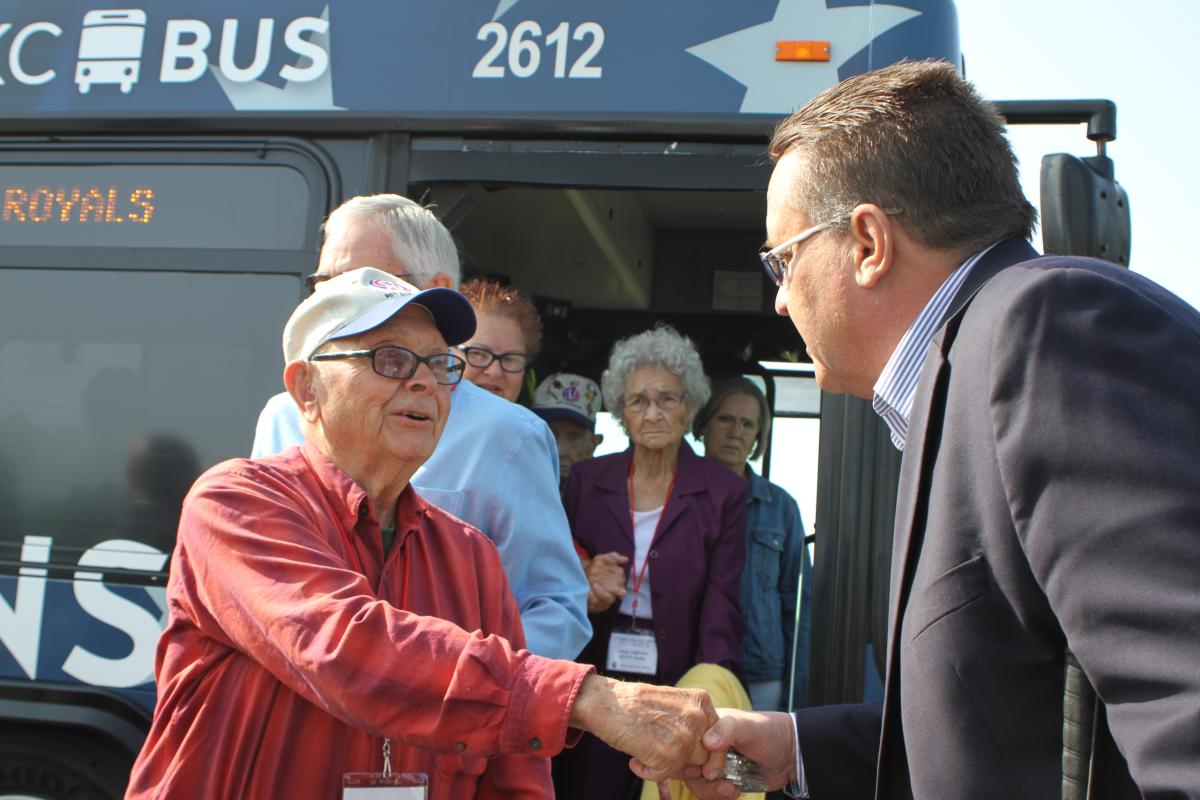Mobility Management: A New Role for Public Transportation Providers

Mobility managers increasingly play an important role in connecting older adults, people with disabilities, veterans, and other members of the riding public to transportation services in their communities. Mobility management, in fact, epitomizes a trend.
The core principle of mobility management is customer-centered transportation. Increasingly, public transportation agencies are rethinking how best to serve their communities by offering coordinated access to diverse customer services, often using new technology. This makes it possible for the customer to find coordinated mobility choices in one place, rather than encountering a confusing array of fragmented transportation services that are often difficult to understand and navigate.
The Kansas City area epitomizes transit challenges common to many other regions: multiple jurisdictions whose services have grown up independently of one another. In Kansas City’s case, transit users are dealing with a two-state, nine-county region. Yet in spite of that unruly challenge, the Kansas City Area Transportation Authority (KCATA) is managing to transform itself into a modern mobility management agency.
Regional Coordination as Mobility Management Foundation
Too often, jurisdictional boundaries present arbitrary barriers to the traveling public needing to crisscross the area to access jobs, medical facilities, and entertainment. KCATA and the area’s Regional Transit Coordinating Council took action to address the confusion of disparate transit services and providers among the two states and nine counties.
To start, transit providers agreed to adopt a single brand, RideKC, for all of the region’s transit systems, unified operationally through a single website. Consistent with the single brand, all agencies adopted the same fare structure, allowing people to buy one pass and use it on different bus systems in the region.
Agencies also created one regional eligibility process for Americans with Disabilities Act (ADA) paratransit and taxi voucher programs, replacing three different certification processes. In addition, four separate public transit call centers became one communications hub. Now customers can book demand-responsive paratransit trips or get fixed-route information for any service from the same touch point. Eventually, KCATA hopes to build a single platform and Mobility as a Service app with all the region’s mobility options.
[Insert photo and quote: “We care about more than just running a bus. I can’t see municipal boundaries and nobody else should either,” Robbie Makinen, CEO, KCATA]
New Era of Mobility
As KCTA is showing, society is moving toward a new era of mobility, one increasingly dominated by on-demand transportation services. Simply put, transportation systems and services must adjust to the needs of customers, and those customers include everyone, whether they can drive (or have their own vehicles) or not.
In a coming blog post, I’ll discuss still more innovative solutions, from ADA-related services to funding innovations that KCATA has developed to ensure that everyone has access to transportation. Put simply, the end goal for all transportation systems should be the same: universal mobility as a service.
Read the mobility managers’ report and other Scorecard promising practices reports.
